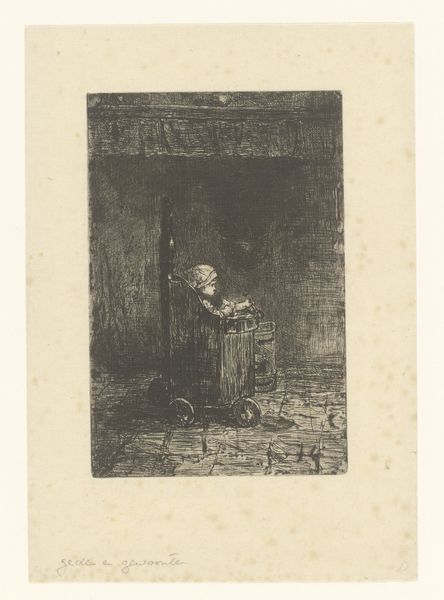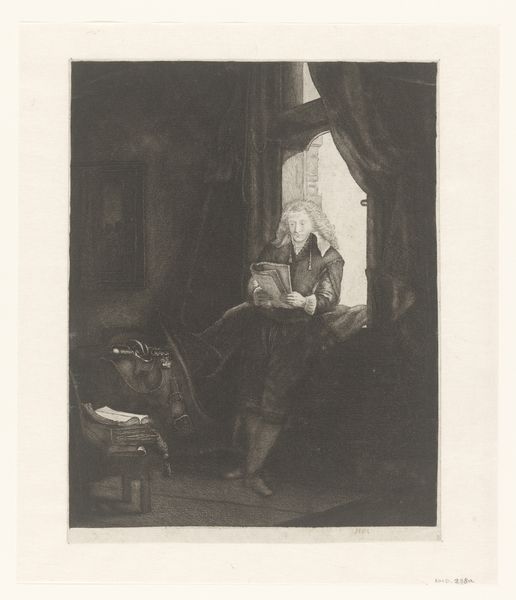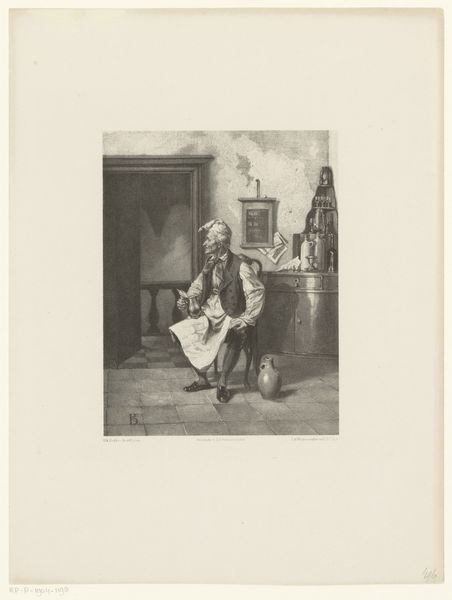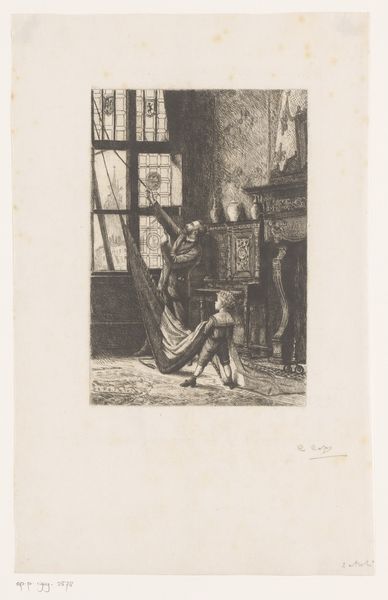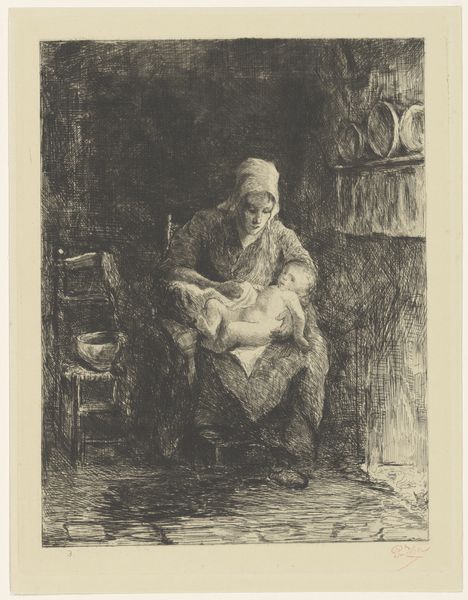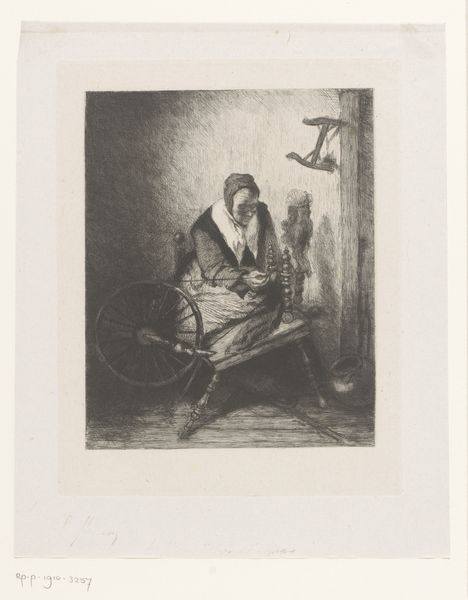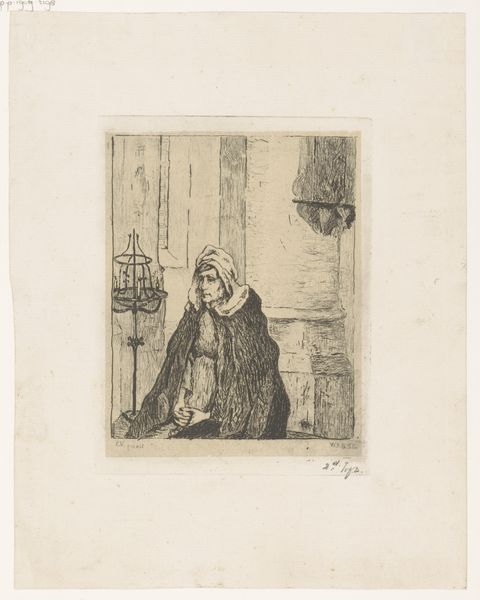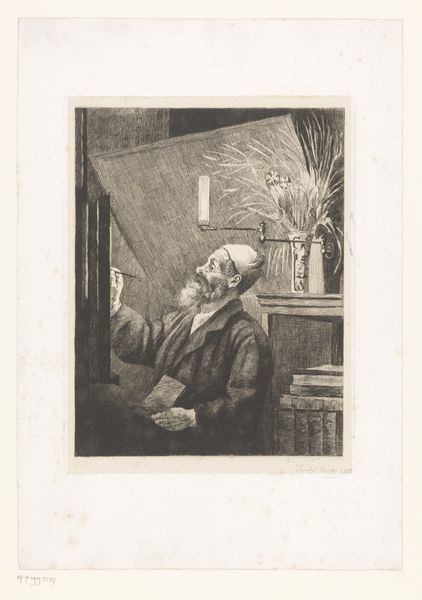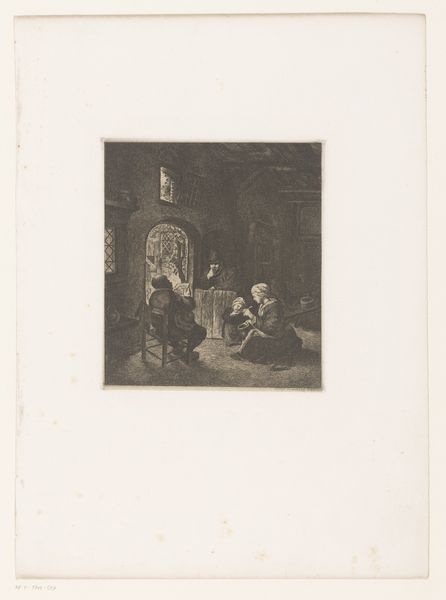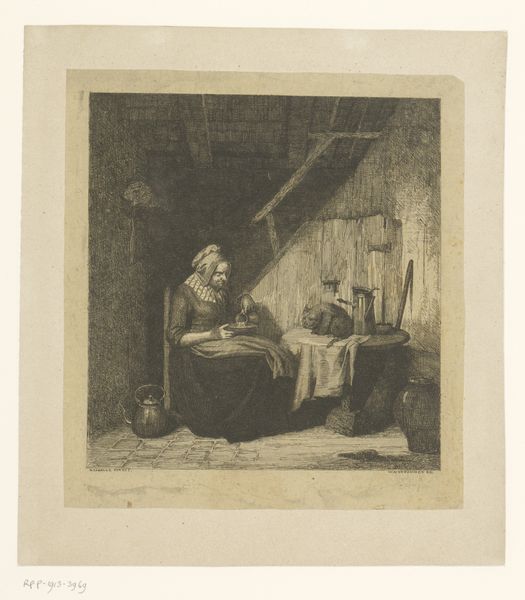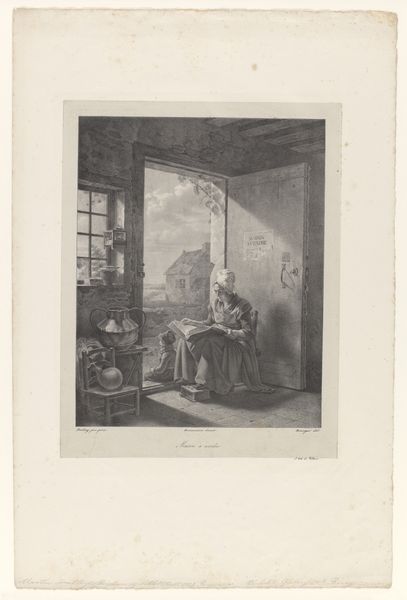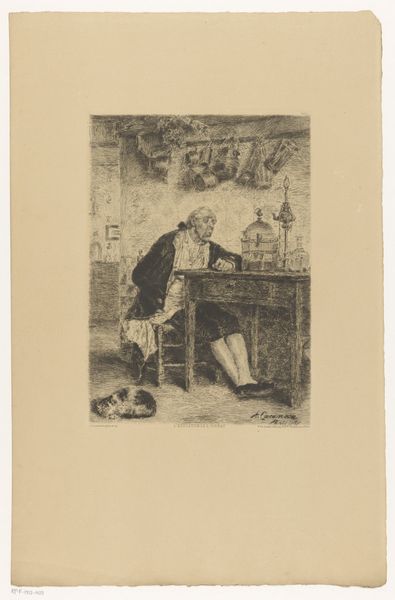
print, etching
#
portrait
#
medieval
# print
#
etching
#
genre-painting
#
realism
Dimensions: height 240 mm, width 179 mm
Copyright: Rijks Museum: Open Domain
Charles Boom etched this interior scene with a woman at a spinning wheel in the late 19th century, capturing a moment of domestic industry. The spinning wheel is a potent symbol. It represents not only labor and the creation of textiles, but also the cyclical nature of life and time itself. The rhythmic turning of the wheel echoes the ceaseless passage of days. We might recall the Greek myth of the Moirai, the Fates, who spin the thread of life. Clotho spins, Lachesis measures, and Atropos cuts the thread, determining the course of human existence. The spinning wheel, thus, is not merely an instrument of production but a symbol laden with profound, often subconscious, associations—weaving together notions of destiny, mortality, and the enduring human connection to creation. Think about how this act, so common at one time, became a powerful and loaded symbol that still resonates with us today. The act of spinning can engage us on a deep, subconscious level.
Comments
No comments
Be the first to comment and join the conversation on the ultimate creative platform.
